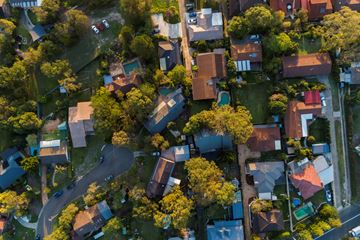

How to calculate rental yield
What's rental yield?
Rental yield is the ongoing return on your investment property. You can use it to assess potential income and cash flow of a property before you buy. It gives you a way to quickly compare returns on different investment properties (or investments), though it doesn't help you work out capital growth. The higher the yield, the better the cash flow tends to be.
How to work out rental yield
There are two types of rental yield that are widely used.
#1 - Gross rental yield
Gross rental yield = Annual rental income (weekly rental income x 52) / property value x 100
For example, you buy a house for $800,000 and charge $700 a week for rent. The gross rental yield for your property would be 4.55%, from $36,400 ($700 X 52 weeks) / $800,000. If you're assessing a property you want to buy, you can use the market value instead of the purchase price.
You calculate the net rental yield by accounting for also the ongoing expenses like mortgage repayments, council rates, maintenance costs, insurance, and renovations.
#2 Net rental yield
Net rental yield = (Annual rental income – Annual expenses) / (Total property costs) x 100
Since one-off expenses like legal fees and stamp duty aren't factored into annual costs, you'll want to keep them in mind while assessing a prospective property. For example, for the same property as above you incur annual expenses of $5,000. This gives you a net rental yield of 3.925%, from ($36,400 - $5,000) / $800,0000.
So the gross rental yield focuses on your rental income only, with no consideration of expenses, which the net rental yield does take into account. So the net rental yield could give you a more accurate idea of the return on a particular property. However, gross rental yields are more commonly used because it's simple to calculate and allows you to easily compare different properties, regions, and areas. Gross rental yields are often used for multiple-property figures like suburb profiles, so they can also be helpful guides if you're comparing properties to suburb or street averages.
Using rental yields to assess properties
Rental yields are helpful tools when used correctly. You could get a good idea of the property's value proposition using rental yield figures - especially when you compare them to wider rental yield trends like property-type yields, suburb yields, or local averages - but keep in mind current or historical figures aren't indicators of future performance.
Rental yields should play an important role in assessing the potential value and return of a property. They shouldn't be used alone but with other indicators like location and potential for capital gain when assessing properties.
Note the net rental yield assumes fixed figures for costs that vary, like vacancy periods, interest rates, and maintenance costs. However, as long as you understand the limitations of these two metrics, you could probably use them wisely to guide your purchase and property portfolio management decisions.
Get an accurate picture of your investment returns
Rental yields can be helpful tools for assessing a property you want to purchase and for tracking how your investment properties are performing. The gross rental yield is a simple figure that lets you easily compare properties and properties in categories, while the net rental yield is more accurate and specific as it takes all the applicable costs into account. By using rental yields along with other metrics, you could obtain an accurate picture of your return on investment and value of potential investments.
If you want to know more about how to calculate your rental yield, get in touch.



